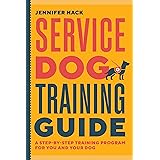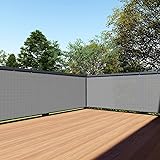Observing a powerful breed like the Rottweiler in full stride, as seen in the video above, immediately highlights the importance of regular physical activity. Effective Rottweiler run training is not merely about burning energy; it forms a critical foundation for their overall health, well-being, and behavior. Understanding how to properly engage your Rottweiler in running activities helps them thrive both physically and mentally. This guide will help you establish a successful running routine for your impressive canine companion, ensuring their safety and enjoyment every step of the way.
Why Rottweilers Need Dedicated Run Training
Rottweilers are strong, athletic dogs originally bred for driving cattle and guarding. These historical roles endowed them with significant strength, endurance, and a keen intelligence. Consequently, they possess considerable energy levels and require structured outlets for this energy. Without adequate exercise, a Rottweiler can become bored, destructive, or develop undesirable behaviors.
Proper run training caters to their natural athleticism and helps prevent common issues. It ensures their large muscles remain toned and their joints stay healthy through appropriate movement. Engaging in regular, controlled running sessions fulfills their instinctive need for purposeful activity. This vital engagement contributes significantly to a balanced and happy Rottweiler.
Essential Benefits of Running for Your Rottweiler
Incorporating running into your Rottweiler’s routine offers a multitude of health and behavioral advantages. Physically, consistent exercise helps maintain a healthy weight, which is crucial for a large breed susceptible to joint problems. It also strengthens their cardiovascular system, improving stamina and overall physical resilience. Running helps build and maintain strong muscles, supporting their skeletal structure effectively.
Beyond physical gains, running provides immense mental stimulation for your Rottweiler. The varying sights, sounds, and smells encountered during a run engage their senses, reducing boredom and anxiety. A well-exercised dog is typically calmer and more receptive to training, leading to better behavior at home. It also deepens the bond between you and your dog, as you share an active and fulfilling experience together.
Preparing Your Rottweiler for Effective Run Training
Before initiating any strenuous physical activity, a veterinary check-up is absolutely essential for your Rottweiler. Your veterinarian can assess their overall health, check for any underlying conditions, and confirm they are fit for a running program. This step ensures you are not putting your dog at risk and helps establish a safe starting point. Consulting with your vet provides peace of mind and professional guidance.
Age is another critical factor to consider before beginning Rottweiler run training. Puppies and young dogs have developing joints and bones that are vulnerable to injury from overexertion. Typically, Rottweilers should be at least 18-24 months old before starting a formal running regimen to allow their skeletal system to mature. Always introduce any new exercise gradually, allowing your dog’s body to adapt progressively.
Safe and Effective Rottweiler Run Training Techniques
Once your Rottweiler is cleared for running, begin with a gentle warm-up. A slow walk or light jog for 5-10 minutes prepares their muscles and increases blood flow, minimizing the risk of injury. Start with short distances and a moderate pace, slowly increasing both duration and intensity over several weeks. A good rule of thumb is to increase distance or time by no more than 10-15% per week.
Pay close attention to your dog’s cues throughout the run. If they lag behind, pant excessively, or show signs of discomfort, it’s time to slow down or stop. After your run, a cool-down period of 5-10 minutes of walking helps their heart rate return to normal and prevents muscle stiffness. Always conclude your running session with ample praise and fresh water for your dedicated companion.
Important Considerations and Safety Tips for Running with Your Rottweiler
Environmental factors significantly impact the safety of your Rottweiler run training. Avoid running during the hottest parts of the day, especially in warm climates, as Rottweilers can overheat easily. Early mornings or late evenings are often the best times for outdoor exercise. Choose appropriate running surfaces; soft ground like dirt trails or grass is preferable to hard asphalt, which can be tough on joints and paw pads.
Hydration is paramount for a running dog. Always carry water for both yourself and your Rottweiler, offering frequent breaks for sips. Monitor their paw pads regularly for any cuts, abrasions, or excessive wear. Look for signs of fatigue or overheating, such as excessive panting, stumbling, or seeking shade. Your Rottweiler relies on you to make these judgment calls for their safety.
Essential Equipment for Running with Your Rottweiler
The right equipment can make your Rottweiler’s run training safer and more enjoyable. A comfortable, well-fitting harness is often preferred over a collar for running, as it distributes pressure evenly across their chest rather than pulling on their neck. Look for harnesses designed for active dogs that allow full range of motion. A sturdy leash, ideally a hands-free leash if you prefer, gives you control while keeping your hands free for balance.
Reflective gear for both you and your dog is crucial if you run during low-light conditions. Consider dog booties if you run on rough terrain or in extreme weather to protect their paws. While not always necessary, some owners find GPS trackers useful, especially if their Rottweiler has a strong prey drive. Investing in good quality gear enhances the safety and effectiveness of your running sessions.
Consistency and Monitoring Progress in Your Rottweiler’s Running Program
Consistency is key to a successful Rottweiler run training program. Aim for regular running sessions, perhaps three to five times a week, allowing for rest days in between. Gradually challenge your dog by increasing the distance, duration, or pace, but always listen to their body and adjust as needed. Keep a log of your runs to track progress and identify what works best for your individual Rottweiler.
Every Rottweiler is an individual, and their stamina and preferences will vary. What works for one dog might not be ideal for another. Celebrate small victories and enjoy the journey of seeing your Rottweiler become a stronger, healthier, and happier companion. Remember, the goal of Rottweiler run training is to foster a healthy, active lifestyle that enriches both your lives together.









